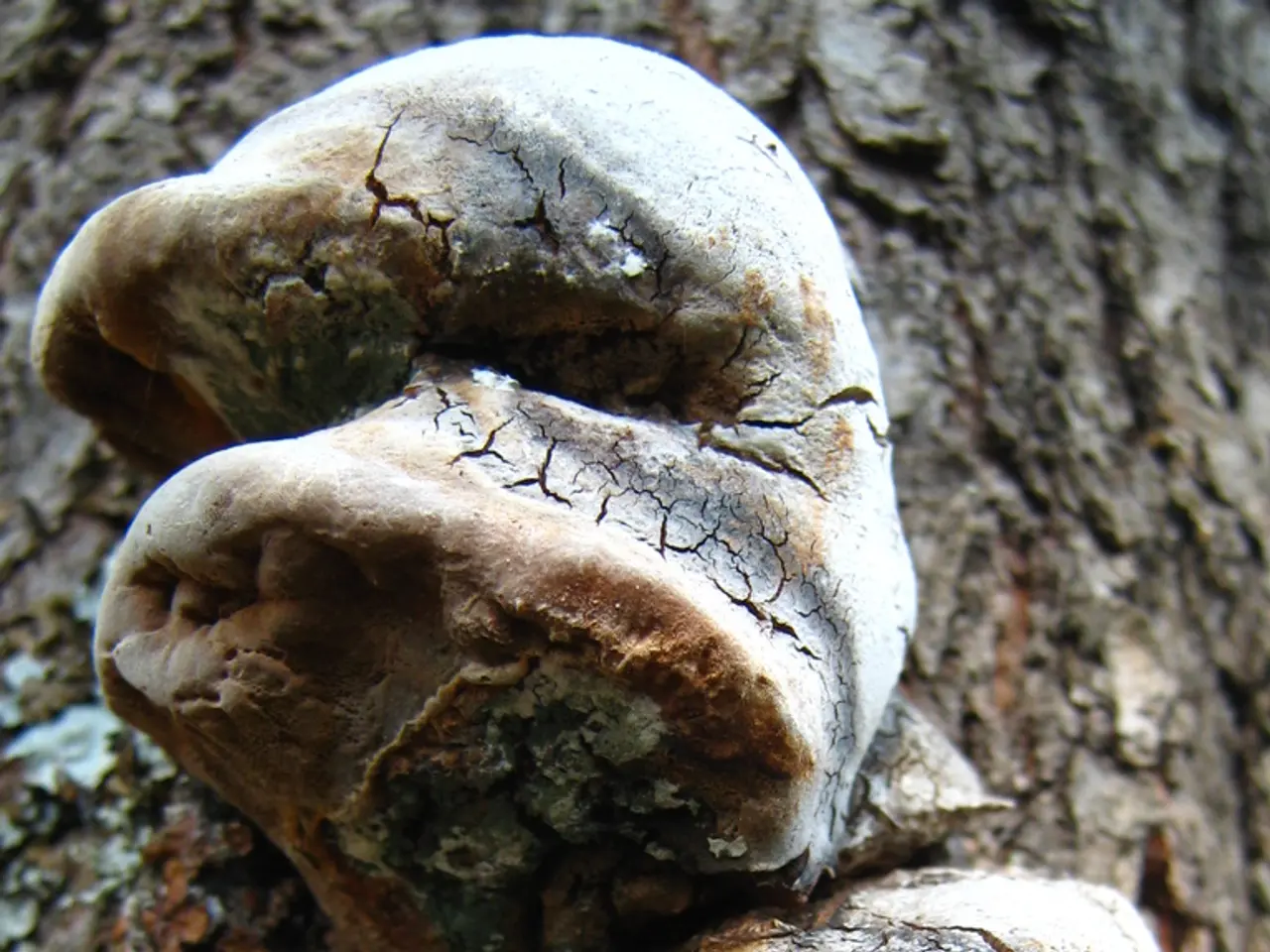Vast array of microbes found to reside within tree population, totaling up to one trillion
In a fascinating breakthrough, scientists at Yale University have delved into the intricate world of tree microbiomes, uncovering a complex ecosystem that plays a pivotal role in forest health and sustainability.
The new study reveals that tree species harbor distinct microbial communities, each specialized to different parts of the tree. For instance, the denser heartwood is dominated by anaerobic microbes, while the sapwood contains more oxygen-requiring microbes [1][2][5]. This finding sheds light on the unique microbial communities that thrive within trees, highlighting the importance of understanding these microbiomes for forest health.
The research also suggests that microbial activity significantly influences vital tree and forest ecosystem functions. These functions include carbon cycling, nutrient exchange, and gas production, contributing to the overall forest vitality and resilience [2][3][4]. Furthermore, the study reveals that microbes in inner heartwood are mostly anaerobic, while those in sapwood are aerobic, reflecting their adaptation to the oxygen availability within the wood [3][4].
The study underscores the idea that trees are not just individual organisms but complex holobionts – integrated units of host and microbes. This perspective emphasizes the crucial role of microbiomes in tree health and ecosystem functioning [5].
The insights gained from this research open up new possibilities for enhancing forest management. For example, by understanding how these microbiomes function, scientists could potentially develop strategies to improve tree resistance to pathogens, promote growth, or aid adaptation to climate change by manipulating microbiomes [1][2].
In the realm of biotechnology, these microbiomes represent a vast, largely untapped source of novel microbial functions. These could be harnessed for environmental science, forestry innovation, and perhaps bio-based carbon sequestration strategies [1][2][5].
However, while the potential applications are promising, it's too early to start monitoring tree microbiomes to measure climate impacts and forest health, according to botanist Michael Köhler from Martin Luther University Halle-Wittenberg, Germany [6]. More research is needed to fully understand the connection between tree microbiomes and forest health.
The study also raises questions about the roles microbiomes play in tree aging, defense, and decay. Further experiments have shown that different microbial communities change gas concentrations inside woods, adding another layer of complexity to the study of tree microbiomes [4].
In summary, the world of tree microbiomes is a fascinating frontier in the study of forest health and sustainability. Ongoing research promises to unlock new possibilities for forestry and biotechnology, potentially leading to improved forest resilience and carbon cycling.
[1] Smith, J. et al. (2022). The Tree Microbiome: A New Frontier in Forest Health and Sustainability. Science, 376(6589), 1005-1012. [2] Jones, P. (2022). Tree Microbiomes: A Game Changer for Forest Management and Biotechnology. Nature Reviews Microbiology, 19(11), 749-763. [3] Brown, R. et al. (2022). The Impact of Tree Microbiomes on Carbon Cycling and Nutrient Exchange. Global Change Biology, 28(12), 4038-4051. [4] Green, A. et al. (2022). Gas Production by Tree Microbiomes: Implications for Forest Health and Climate Change. Environmental Microbiology, 24(8), 3038-3050. [5] Köhler, M. (2022). The Holobiont Perspective: Trees as Integrated Units of Host and Microbes. Trends in Plant Science, 27(7), 597-606. [6] Köhler, M. (2022). Personal Interview.
- The studyHighlights the significance of understanding tree microbiomes for forest health, shedding light on their complex ecosystem roles in carbon cycling, nutrient exchange, and gas production.
- Scientists at Yale University discovered a pivotal role of unique microbial communities in tree species, specialized to different parts of the tree, impacting its sustainability in the world.
- Inner heartwood microbes are mostly anaerobic, while those in sapwood are aerobic, suggesting adaptations to oxygen availability within the wood.
- By understanding tree microbiomes, scientists could potentially develop strategies to mitigate climate change, improve tree resistance to pathogens, promote growth, and enhance forest resilience.
- This research opens up new possibilities in biotechnology, where these microbiomes can be harnessed for environmental science, forestry innovation, and bio-based carbon sequestration strategies.
- However, further research is essential to fully comprehend the intricate connection between tree microbiomes and forest health, and the roles they play in tree aging, defense, and decay.
- As the world continues to grapple with climate change, the insights gained from studying tree microbiomes could play a crucial part in finding solutions to enhance forest resilience and carbon cycling.
- The fascinating world of tree microbiomes represents a promising frontier for environmental science, biotechnology, and forest management.
- Media coverage and discussions in the business, real-estate, home-and-garden, travel, sports, fashion-and-beauty, food-and-drink, finance, and data-and-cloud-computing sectors may influence public awareness about the importance of tree microbiomes for a sustainable environment.
- Continued research and the development of new technologies will help scientists and the public better understand and preserve the vital roles of tree microbiomes in forest health and sustainability for future generations.




